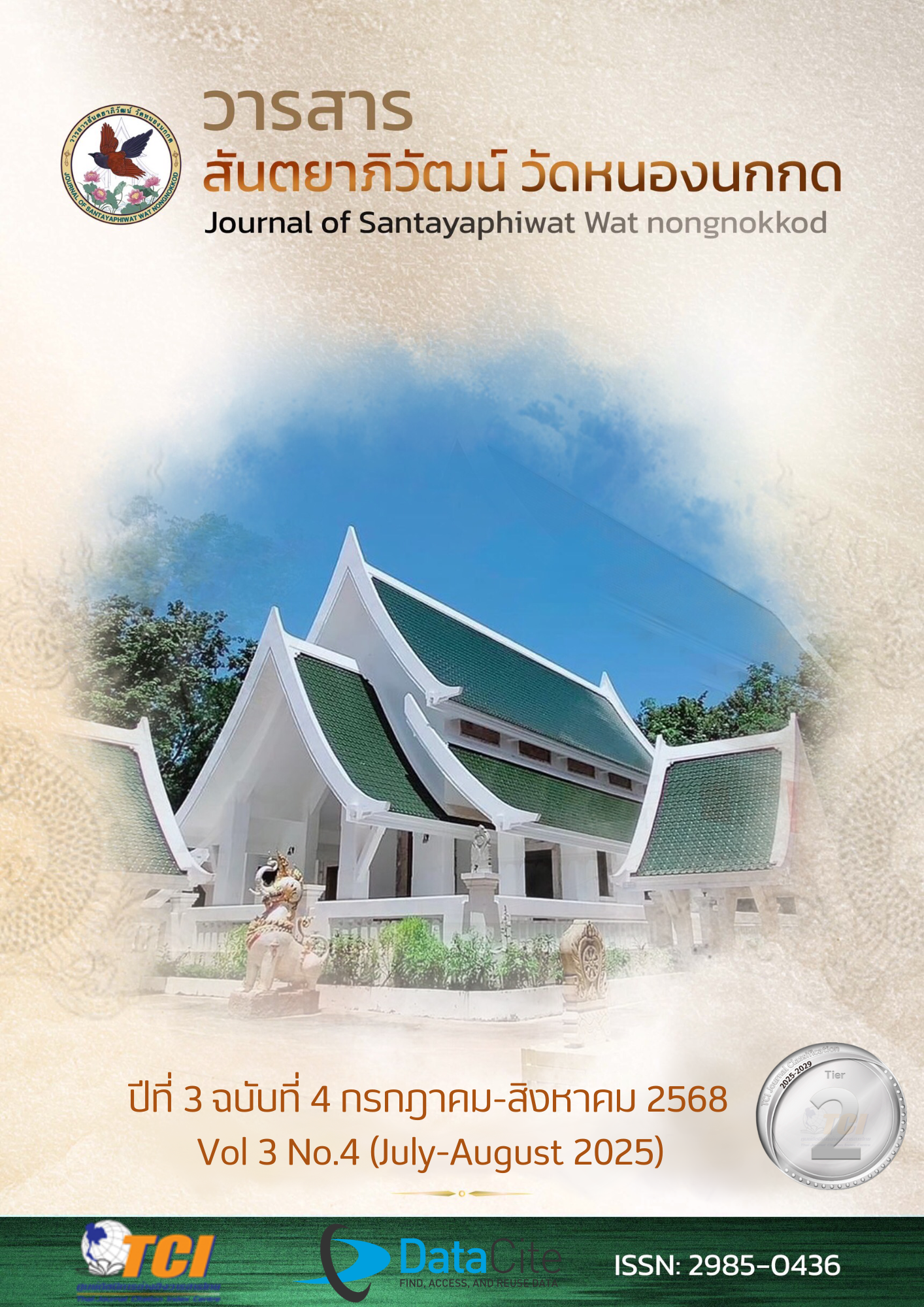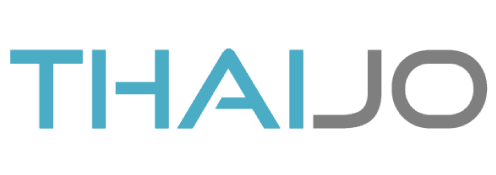DEVELOPMENT OF AN INSTRUCTIONAL MODEL TO ENHANCE UNDERGRADUATE STUDENTS CREATIVE WRITING PROFICIENCY BASED ON THE ACTIVE LEARNING APPROACH
Keywords:
instructional mode, creative writing proficiency, undergraduate students, active learning approachAbstract
The objectives of this research were 1) study the basic information and identify the needs for developing an instructional model and 2) design and develop an instructional model to enhance the creative writing ability of undergraduate students based on the active learning approach. The target groups consisted of 10 creative writing experts 100 undergraduate students majoring in Thai Language Teaching and 5 experts for model validation all selected through purposive sampling. The research instruments included 1) a document analysis form related to creative writing, 2) an interview form for creative writing experts 3) a questionnaire on instructional needs for enhancing creative writing ability 4) a draft instructional model to enhance creative writing ability of undergraduate students based on the active learning approach and 5) an evaluation form for assessing the appropriateness of the instructional model. Data were analyzed using mean ( ) standard deviation (S.D.) and content analysis.
The results of research revealed that The instructional model development needs consisted of (1) concepts and theories related to creative writing and the active learning approach (2) instructional principles (3) learning objectives and (4) instructional procedures based on the model. The instructional model to enhance the creative writing ability of undergraduate students based on the active learning approach comprised six instructional steps: Step 1 – Inspire motivation; Step 2 – Define writing direction and create an outline; Step 3 – Begin writing; Step 4 – Revise and improve; Step 5 – Present the work; and Step 6 – Reflect and refine. The developed model was found to be highly appropriate overall.
References
กระทรวงศึกษาธิการ. (2546). พระราชบัญญัติการศึกษาแห่งชาติ พ.ศ.2542 และที่แก้ไขเพิ่มเติม (ฉบับที่ 2) พ.ศ. 2545. กรุงเทพฯ : กระทรวงศึกษาธิการ.
กระทรวงศึกษาธิการ. (2553). หลักสูตรแกนกลางการศึกษาขั้นพื้นฐาน พุทธศักราช 2551. (พิมพ์ครั้งที่ 3). กรุงเทพฯ : โรงพิมพ์ชุมนุมสหกรณ์การเกษตรแห่งประเทศไทยจำกัด.
กุสุมา แสงมาศ. (2555). การเปรียบเทียบผลสัมฤทธิ์ทางการเรียนเรื่อง บทประยุกต์ กลุ่มสาระการเรียนรู้คณิตศาสตร์ชั้นประถมศึกษาปีที่ 5 ระหว่างการจัดกิจกรรมการเรียนรู้โดยใช้ปัญหา เป็นฐานกับการเรียนการสอนตามปกติ. วิทยานิพนธ์ปริญญาการศึกษามหาบัณฑิต สาขาวิชาการวิจัยการศึกษา บัณฑิตวิทยาลัยมหาวิทยาลัยมหาสารคาม.
จิตรลดา คันธะวงค์. (2558). การจัดการเรียนรู้เพื่อส่งเสริมความสามารถในการแก้ปัญหาคณิตศาสตร์เรื่องจำนวนเชิงซ้อนของนักเรียนชั้นมัธยมศึกษาปีที่ 5. วิทยานิพนธ์ ศึกษาศาสตรมหาบัณฑิต : บัณฑิตวิทยาลัย มหาวิทยาลัยเชียงใหม่.
จุฬาภร เมืองโคตร. (2555). การพัฒนากิจกรรมการเรียนรู้โดยใช้ปัญหาเป็นฐาน เรื่อง บทประยุกต์กลุ่มสาระการเรียนรู้คณิตศาสตร์ ชั้นประถมศึกษาปี ที่ 6 โรงเรียนคําแฮดประชาสรรค์ สังกัดสำนักงานเขตพื้นที่การศึกษาประถมศึกษามุกดาหาร. วิทยานิพนธ์ปริญญา การศึกษามหาบัณฑิต สาขาวิชาหลักสูตรและการสอน บัณฑิตวิทยาลัยมหาวิทยาลัยมหาสารคาม.
ฐะปะนีย์ นาครทรรพ. (2521). ภาษาไทยสำหรับครู. กรุงเทพฯ : คณะครุศาสตร์ จุฬาลงกรณ์มหาวิทยาลัย.
ทิศนา แขมมณี. (2555). ศาสตร์การสอน : องค์ความรู้เพื่อการจัดกระบวนการเรียนรู้ที่มีประสิทธิภาพ. กรุงเทพฯ : จุฬาลงกรณ์มหาวิทยาลัย.
ธัญญรัตน์ ธนูรัตน์.(2554). การพัฒนาการจัดกิจกรรมการเรียนรู้โดยใช้ปัญหาเป็นฐาน กลุ่มสาระการเรียนรู้คณิตศาสตร์ เรื่องรูปสี่เหลี่ยม ชั้นประถมศึกษาปีที่ 5. วิทยานิพนธ์ปริญญา การศึกษามหาบัณฑิต สาขาวิชาหลักสูตรและการสอน บัณฑิตวิทยาลัยมหาวิทยาลัยมหาสารคาม.
ภัททิรา เดชฤกษ์ปาน และ คณะ. (2565). การพัฒนารูปแบบการจัดการเรียนรู้ตามแนวคิดเชิงรุก เพื่อเสริมสร้างความสามารถในการสร้างนวัตกรรมทางคณิตศาสตร์สำหรับนักเรียนชั้นประถมศึกษาปีที่ 4. วารสารวิชาการสถาบันพัฒนาพระวิทยากร ปีที่ 5 ฉบับที่ 2 (เมษายน-มิถุนายน 2565). 87-104
สมพร มันตะสูตร. (2525). การเขียนสร้างสรรค์. กรุงเทพฯ : บารมีการพิมพ์.
Joyce, B. and Weil, M. (1996). Models of teaching. Needham Height, Ma.: A Simon &. Schuster Company.








